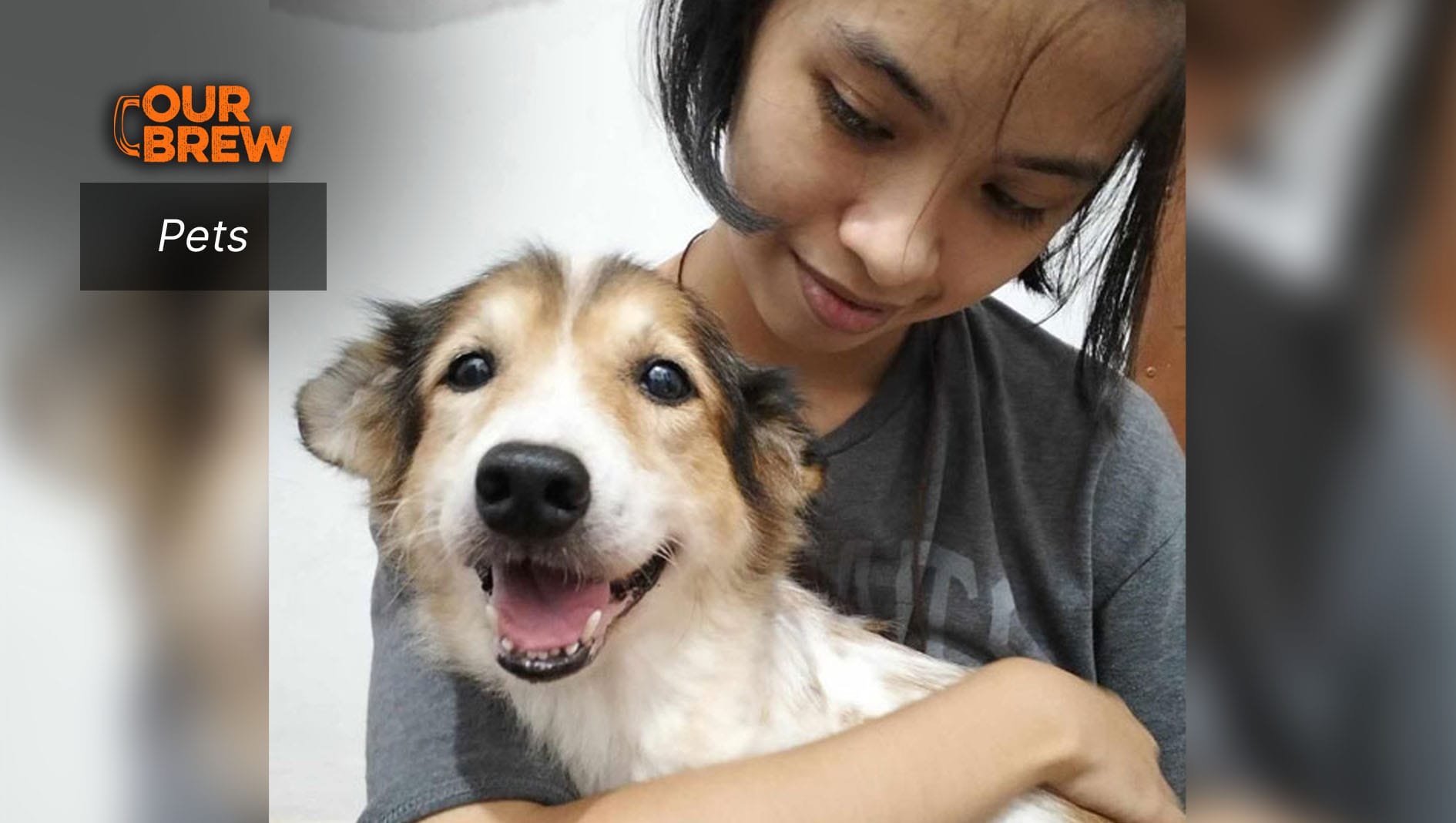
By Mariana Burgos
Dogs live an average of around 12 to 13 years. However, many live considerably longer. Senior dogs, like humans, require special attention as they age. And, like people, some older dogs grow grumpy, “makulit,” and forgetful too. As a dog owner, you should be aware of all the ways you can help to improve your dog’s quality of life throughout their golden years.
Laura Mueller, in the article “Simple Ways to Keep Your Aging Dog Healthy and Happy,” says the process of becoming a senior dog is determined by size and heredity. According to her, large breed dogs are considered seniors early in life, with some enormous breeds starting at the age of 5 or 6 years old, while smaller breeds become senior dogs later in life, around the age of 8 to 10.
Here are some tips from Mueller on how to care for our senior dogs:
1. Add another schedule of vet visits.
Mueller suggests that, in addition to your normal once-a-year appointment to your veterinarian, you make a mid-year visit. The American Animal Hospital Association (AAHA) says doing so will help in creating baselines for your pet’s health and guarantee that “clinically silent health abnormalities” will be detected sooner rather than later.
2. Maintaining a healthy diet.
A dog’s nutritional needs alter as he or she ages. It varies by breed and size, but your dog may benefit from gradually transitioning to a senior dog food at the age of seven. A veterinarian can help you decide what is best.
Monitor your pet’s eating and drinking habits, and report any changes in their feeding patterns or weight to your veterinarian, since there might be an underlying medical reason.
If you have other, younger dogs in the house, make sure your senior dog can get to their meal without having to compete.

3. Provide supplements as prescribed by your vet.
There are several vitamins that may help your dog stay healthy as they age. Glucosamine and chondroitin can assist to preserve the cartilage in your dog’s joints and have been shown to help control the discomfort of osteoarthritis. Omega-3 fatty acids can also aid to minimize joint inflammation, lessen the need for additional pain drugs, and may benefit dogs with cognitive impairments since they enhance cell membrane health. Although there is not much scientific data, antioxidants may aid enhance memory and cognition in elderly dogs.
It is critical to understand that not all supplements are made equal. We highly advise selecting brands that have stringent quality control procedures in place and whose products have been subjected to clinical trials to prove their safety and efficacy. Human supplements should never be given to dogs since they may contain hazardous substances, and you should always check your veterinarian before beginning a new supplement regimen for your dog.
4. Watch out for signs of pain and other changes in behavior.
In addition to keeping a close check on any bodily changes (as suggested by Mueller), you should also keep an eye out for behavioral changes, as these are frequently the earliest indicators of disease. Any change in behavior that last more than a week or so may need a visit to your veterinarian.
5. Adjust your senior dog’s exercise routine.
Your dog’s stamina and mobility will deteriorate over time, so you will need to adapt their exercise program appropriately. You may need to switch jogs and hikes for walks, and divide longer walks into multiple shorter ones. Choose low-impact workouts; avoid anything that requires running or leaping; and try taking your dog swimming during the warmer months if they like the water.
6. Give your aging dog additional stimulus.
A number of studies have indicated that mental stimulation can assist to mitigate the consequences of deteriorating cognition in dogs. Consider offering extra ‘brain teasers’ for your dog, such as food puzzle toys, sensory activities, teaching obedience or trick training, and fostering regular socialization with other dogs.
7. Make some adventure time.
Mueller reminds us that spending quality time with our dogs becomes increasingly more vital as they age. By going on regular outings together, you can make the most of every time and expose them to new noises, sights, and scents. Make the greatest moments for him/her to remember and treasure.
8. Assist your older dog with grooming.
As their mobility declines, elderly dogs may be unable to reach all regions of their bodies as effectively as they once did, and they may struggle to keep themselves as clean as they once did. Schedule frequent brushing sessions to eliminate knots and loose fur before it becomes matted. You may need to do this weekly or every few days, depending on your dog’s coat and whether it’s shedding season. Your dog may also require more frequent washes than previously.
Grooming appointments are an excellent opportunity to perform a ‘once over’ on your dog to check for any lumps or bumps.

9. Maintain your older dog’s dental health.
Dental health is crucial at all ages, but especially during your dog’s senior years, when a lifetime of eating and chewing wears down their teeth and gums. Brush your dog’s teeth once a day using dog-safe toothpaste, and have your vet inspect them during wellness examinations. Remember that your dog’s teeth deteriorate with age, so never offer them hard chews, bones, antlers, or hard toys.
10. Adapt your elderly dog’s environment to keep them comfortable.
You may need to make a few changes to your house to keep your elderly dog comfortable:
– Avoiding stairs and steps: Climbing stairs can be difficult or uncomfortable for seniors, especially those who have arthritis. You may need to relocate their sleeping place or consider adding ramps to help them negotiate steps more comfortably. If your dog likes to snuggle up with you on the couch, a ramp going to the couch may be useful, and smaller dogs may need to be scooped up.
– Cover slippery surfaces: As their mobility deteriorates, elderly dogs may lose their balance and find walking on hard, slick flooring distressing. Covering them with carpet, rugs, or mats provides greater grip, allowing your dog to move more freely.
– Provide orthopedic bedding: Dogs with arthritis or other painful diseases may benefit from a thick, therapeutic pet bed to provide extra comfort while resting.
– Raise food and water bowls: Senior dogs, especially taller dogs, may struggle to bend down to reach their food and water bowls. You may either set their feeding bowls on a platform or buy height-adjustable bowls.
Although the changes your dog encounters in their senior years may appear daunting, minor improvements in their diet, activity, habitat, and care may make a significant impact in their quality and length of life.
This article also appears in the Manila Standard
About the Author: Mariana Burgos is a freelance artist. She has been a solo parent for 16 years now because she is wife to a desaparecido. She and her daughter are animal lovers and are active in advocating not only human rights but the rights of animals as well.

If you liked what you just read and want more of Our Brew, subscribe to get notified. Just enter your email below.


Related Posts
Understanding Pets With Special Needs
Mar 03, 2025
Can Cats Eat Basil Leaves?
Feb 20, 2025
The Right Way to Pick Up, Hold, and Carry Your Dog
Feb 17, 2025